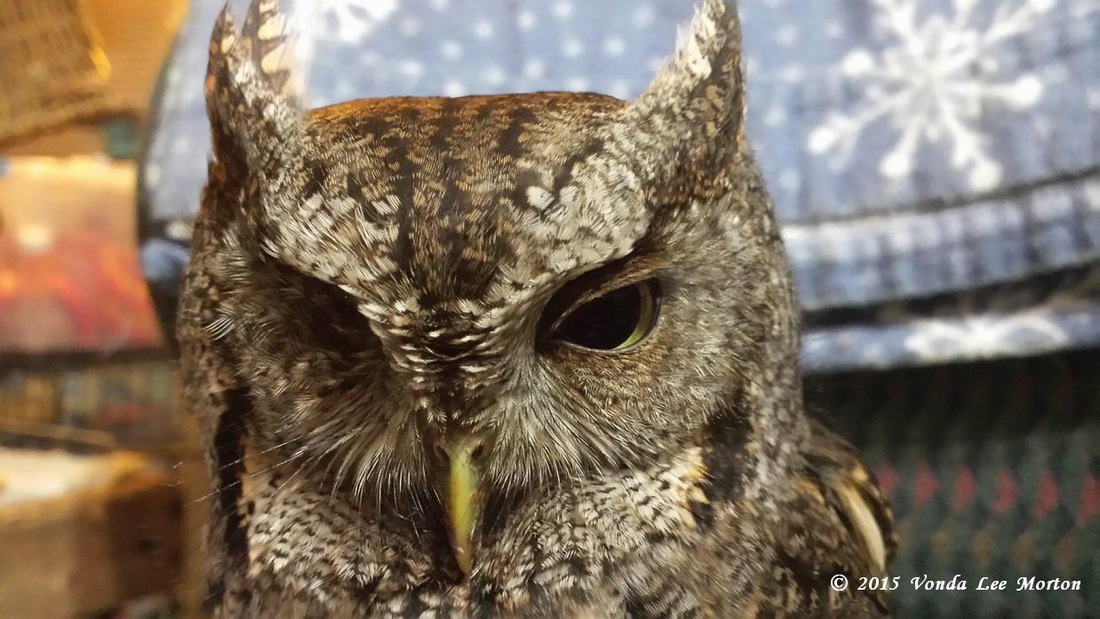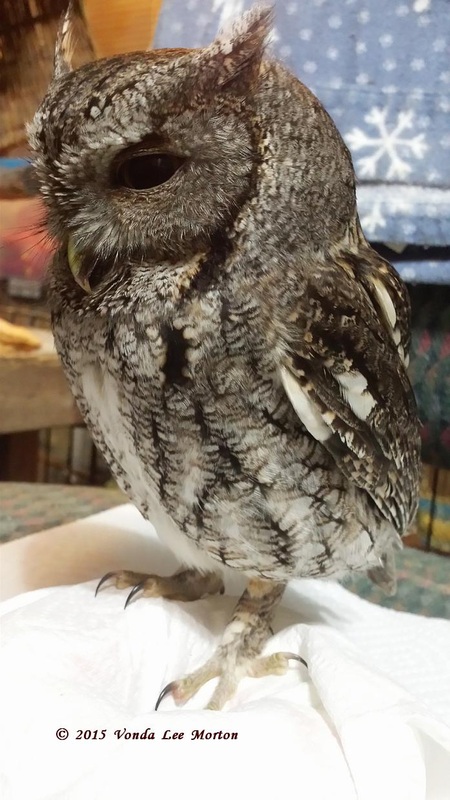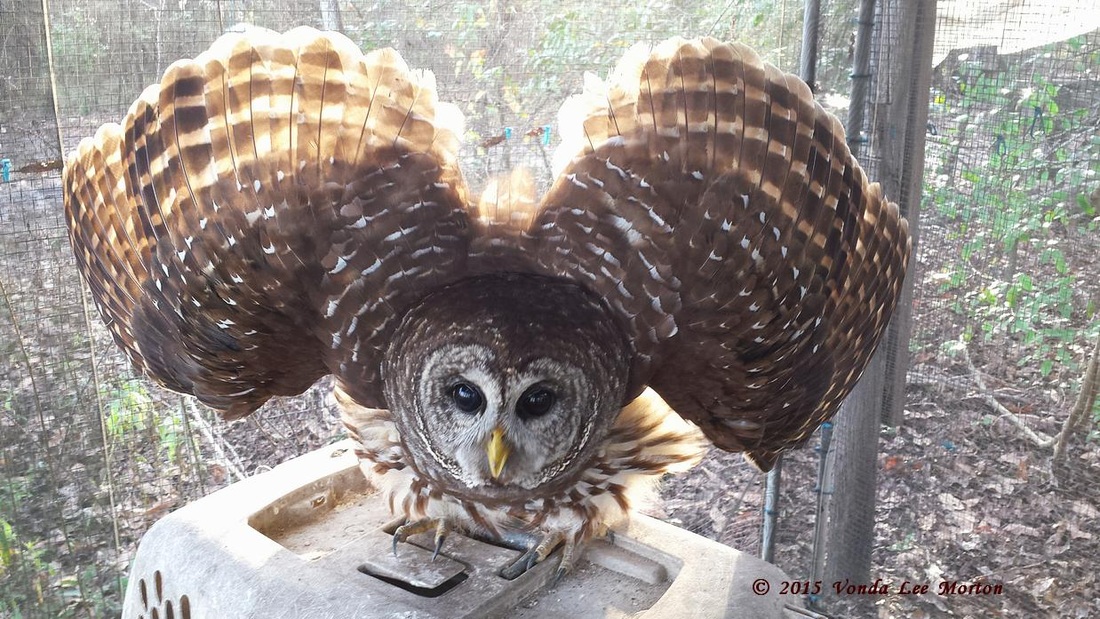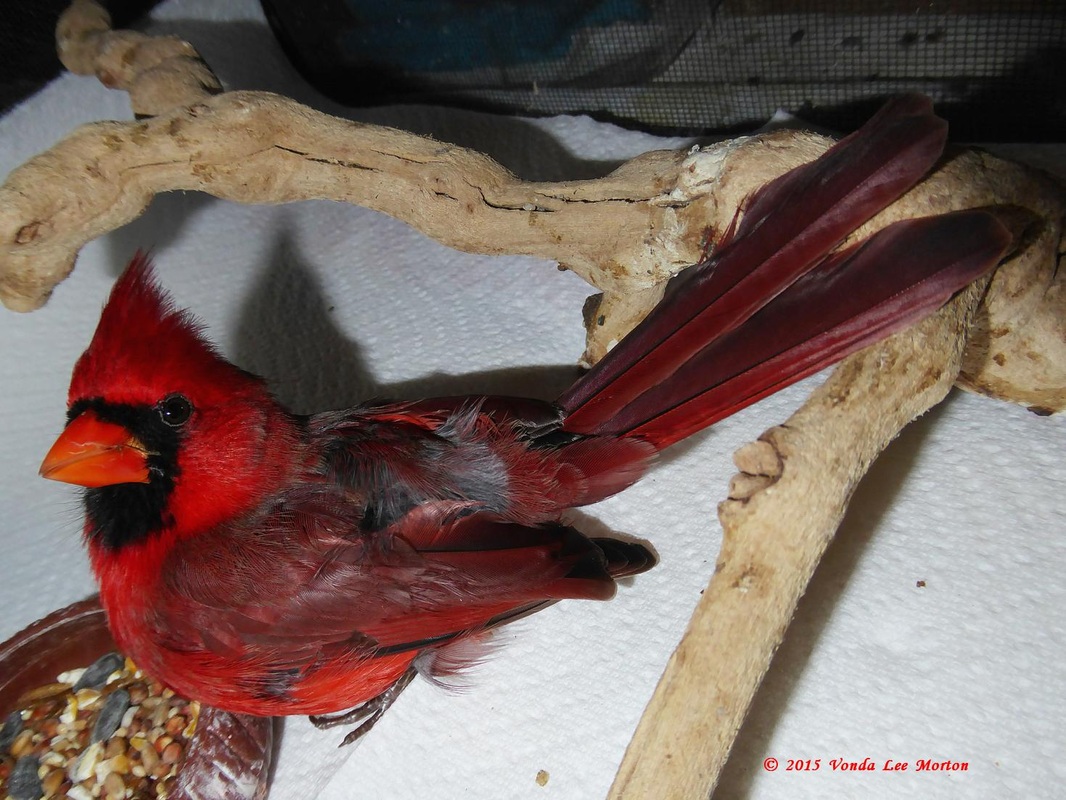By late evening he had perked up considerably and was eating well, so I was hopeful that we could plan a quick release for this colorful guy. Unfortunately, he died during the night. As I’ve said before and will likely say many times this year, as well, it’s extremely frustrating when a bird is doing well and seems to be a good candidate for release, and then it drops dead for no apparent reason.
We never know the full story on our intakes unless the finder actually saw the bird hit by a car or attacked by a cat or narrowly avoid being lunch for a raptor—and it’s rare indeed to have an eyewitness account. Most often, finders see the birds after the injury has occurred, so they really can’t state with certainty what happened, nor can we as rehabbers, although we certainly do like to guess.
1. Keep your cats indoors—this is safer for both wildlife AND cats. Indoor cats won’t attack birds, squirrels or rabbits, and they won’t run the risk of attack themselves by larger predators, disease or injury from fighting, or being run over. It’s a win-win situation.
2. Avoid the use of pesticides, insecticides, and rodenticides. Insecticides and pesticides on your plants kill bird food (insects). If the birds eat the poisoned insects, they die. If they feed poisoned insects to their babies in the nest, the babies die. They also get on the birds’ skin/feathers and are ingested when they preen, resulting in death. Further, the chemicals can rub off the adult birds’ skin/feathers onto the nestlings and kill them. As for rodenticides, while you may think they’re a great way to control mice and rats, let me again point out that they have unintended victims. Poisoned rodents are eaten by raptors, who then succumb to the same poisons that killed the rodents. Also, domestic pets and children have been known to eat the rodenticides, with disastrous results.
3. Create a wildlife haven in your yard. It’s not difficult: a few feeders for the types of birds you want to attract (and clean the feeders regularly); water sources (changed daily to avoid breeding mosquitoes) that can be as simple as a few shallow dishes set on the ground or on picnic tables; brush piles/shrubs in a corner of the yard to provide cover and potential nesting spots for birds and small mammals; a small plot “ignored” by the lawn mower and perhaps even planted with native-to-your-region wildflowers and shrubs; leave snags (dead trees) for cavity nesters such as bluebirds, flying squirrels, woodpeckers and screech owls; put up nest boxes for bluebirds, screech owls, barn owls and other species that will readily use them.
4. No tree trimming or felling from March-September. Actually, I’d say there’s really no good time to trim/fell trees, as March to September is prime songbird nesting season, but owls have eggs/babies in the nest as early as January/February, and it’s not uncommon for squirrels to have babies in their nests by mid to late February and again throughout the fall, beginning as early as August and running through November. So at the very least, check the tree very carefully if it absolutely must be trimmed/felled.
5. Learn the name and contact number of your local wildlife rehabber. Share it with friends and relatives. Hope you never need it, but have it handy in case you do. In this day and age, there’s no reason not to just go ahead and program it into your phone!
6. Donate to your local rehabber. Remember that rehabbers receive no state or federal funding, so consider a monthly donation. Every little bit helps!
7. Get outside more often and become aware of your environment, especially your own yard. Learn what species are normal for your yard. Get a good bird guide (I’m fond of Sibley’s) and learn to identify the birds you see most frequently. You’d be surprised how many people can’t identify common back yard birds like mockers, cardinals, wrens, titmice, chickadees and blue jays. Go outside at night and listen for the night birds that you may never actually see, like the various species of owls and nighthawks—and even nocturnal mammals like flying squirrels that you’re more likely to hear than see. Your yard is its own little world; become familiar with it!




 RSS Feed
RSS Feed
